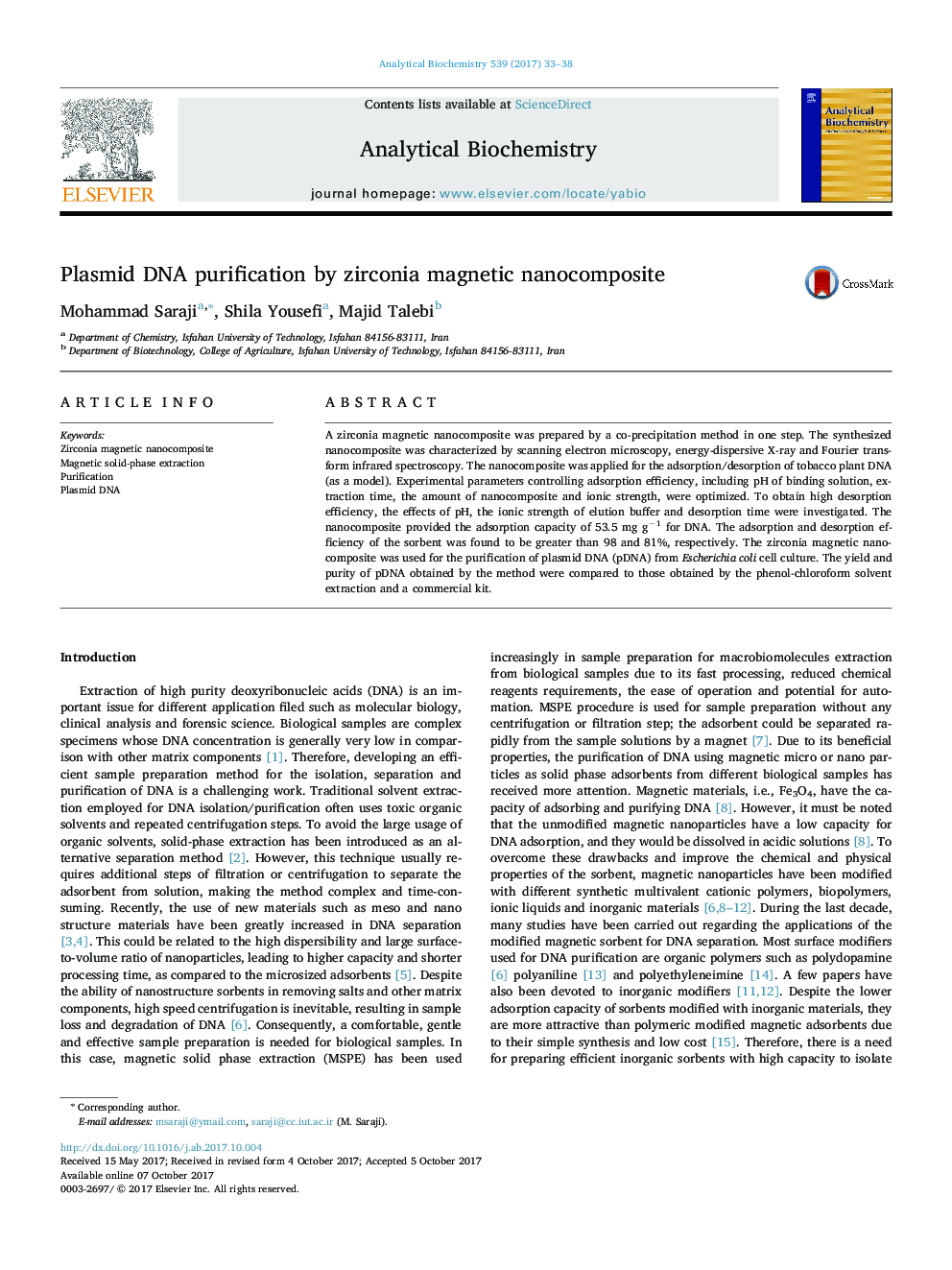| Article ID | Journal | Published Year | Pages | File Type |
|---|---|---|---|---|
| 5131441 | Analytical Biochemistry | 2017 | 6 Pages |
A zirconia magnetic nanocomposite was prepared by a co-precipitation method in one step. The synthesized nanocomposite was characterized by scanning electron microscopy, energy-dispersive X-ray and Fourier transform infrared spectroscopy. The nanocomposite was applied for the adsorption/desorption of tobacco plant DNA (as a model). Experimental parameters controlling adsorption efficiency, including pH of binding solution, extraction time, the amount of nanocomposite and ionic strength, were optimized. To obtain high desorption efficiency, the effects of pH, the ionic strength of elution buffer and desorption time were investigated. The nanocomposite provided the adsorption capacity of 53.5 mg gâ1 for DNA. The adsorption and desorption efficiency of the sorbent was found to be greater than 98 and 81%, respectively. The zirconia magnetic nanocomposite was used for the purification of plasmid DNA (pDNA) from Escherichia coli cell culture. The yield and purity of pDNA obtained by the method were compared to those obtained by the phenol-chloroform solvent extraction and a commercial kit.
